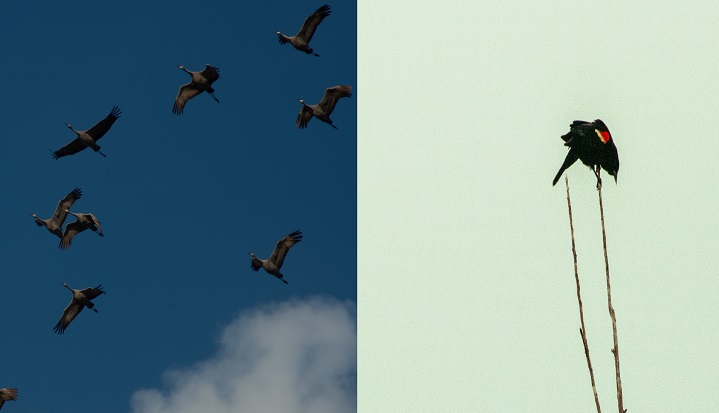While social distancing is keeping many indoors, on Saturday Nature Saskatchewan is going virtual, celebrating its sixth annual World Migratory Bird Day online.

“This is huge. Bird migration is something we kind of dismiss, but it happens every year. When we take the time to think about a bird and the migration that it makes, it’s phenomenal,” said Rebecca Magnus, Nature Saskatchewan’s conservation and education manager.
“It is one of the most amazing things that nature does.”
World Migratory Bird Day celebrates migratory birds, bird conservation and bird education across the globe.
“In North America we celebrate it the second Saturday in May when all of our birds are returning or passing through on migration to their breeding grounds,” Magnus said.

This year, the theme is Birds Connect Our World. Magnus said Nature Saskatchewan will be hosting a photo sharing event starting at 9:30 a.m.

Get daily National news
“The point of it is to share stories, more so than photos, and people will realize that birds do connect our world. Not only through stories and similar experiences with the birds, but the great migrations and the great feats that these birds have to go through,” Magnus said.
Each year, Magnus explained that around 300 bird species make their way through Saskatchewan or come to the province to breed.
Magnus added that one of the most majestic and beautiful birds to make their way through Saskatchewan is the whooping crane.
“The whooping crane stands about five feet tall and was nearly extinct in the 70’s- there were less than 30 birds left. Now the whooping crane is upwards of 500 to 700 or more each year,” Magnus said.
“They do this migration where they go from the Mid Southwest U.S. all the way up to Wood Buffalo National Park in northeastern Alberta, northwestern Saskatchewan and they raise their young there. If you are lucky enough you might see them in small flocks of their own usually between 10 to 30 or with huge flocks of Sandhill Cranes.”
Magnus said one of the ways in which people can help assist birds during their migration is by putting up bird baths, feeders, or nesting boxes.
To learn more or to register click here.









Comments